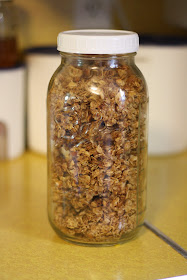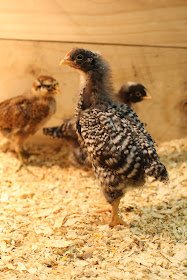With my old 200 sq foot garden, I could usually get everything planted in one or two days. This new 4000+ sq foot garden has taken much longer - no big shocker there. I've been putting in plants started in the basement and planting seeds, little by little since the end of March. As the weather warmed, I've been scrambling to get my warm weather plants in the ground - tomatoes, peppers, tomatillos, etc.
Onions ready to be planted - these were started in the basement under grow lights, along with all my tomato, pepper, broccoli, celery, and herbs plants.
My style of gardening is based on companion and succession planting. By this I mean that I like to plant several different types of plants in the same bed that will be beneficial to each other (companion planting) and I combine plants that will mature at different times, making sure I never have empty beds (succession planting). Planting beds of one single crop is an invitation for disaster. Once a pest insect discovers the bed, there is no stopping it from decimating the crop. It's so easy for the pest to hop from one plant to the next. This is why mono-cultures of crops (growing one crop in an area) are such a poor idea and require massive amounts of pesticides. By mixing several types of plants together, the pests are confused and often die before they can find their food source.
One example of companion and succession planting is the bed below. In this bed, I have Sugar Snap Peas, Spinach, Garlic and Tomatoes (the tomato plants are small, so it's hard to see them). The spinach matured first. We've been eating spinach for breakfast, lunch and dinner the last 2 weeks. Next will come the peas. In the meantime, the tomatoes will be growing larger, shading the spinach plants so they can keep on producing (spinach doesn't like hot weather and benefits from being grown in shade in the summer). By the time the tomatoes are starting to take over the bed, the peas will be finished and I will tear them out and perhaps plant some pole beans to climb the trellis instead. The garlic will be harvested in late summer/early fall, repelling bugs from the tomatoes all summer long (most insects dislike the smell of onion and garlic plants). Now is also the time to plant Borage, a flower that has been shown to repel Tomato Hornworms, which are, in my opinion, the most vile and disgusting creature I've ever seen (I may or may not have been know to scream like a little girl when I discovered one of these in my garden). They are HUGE and will destroy your tomatoes. Ever since I started planting Borage alongside my tomatoes, I have not spotted a single Tomato Hornworm... much to my relief (I have the heebiee-jeebiees just thinking about them. Ugggg). As an added bonus, the flowers are beautiful and attract honeybees.
Garden bed with Spinach, Sugar Snap Peas, Spinach and Garlic
I've also planted several other flowers throughout the garden, such as marigolds, petunias, zinnias, cosmos, poppies and sunflowers to attract beneficial insects that will keep my pest insect populations down. I cannot advocate using pesticides in the garden. Not only is there a risk to human health, but pesticides do not differentiate between beneficial insects and pest insects. They kill everything. Unfortunately, pest insects are able to reproduce faster than the beneficials, so they will eventually come back to your garden and wreak even greater havoc because there are no beneficial insects to control their population. It is a vicious cycle and every time you spray a pesticide, the problem gets worse. Accept that sometimes the insects will win, no matter what organic pest control options you try. We cannot control every aspect of nature. We are not God.
This year, I decided to try planting potatoes again (I'd had minimal success with them in my old garden). In case you didn't know, potatoes tubers grow underground, but the plant itself grows above the ground. It looks much like a tomato plant (and it should, because they are in the same plant family, Solanaceae or "nightshade", which also includes pepper and eggplants). As the potato plants grows, it is customary to pile soil up around the plant (or mulch heavily with straw), leaving only the top few leaves exposed. This is called "hilling up" and is done in order to keep the potato tubers from being exposed to the sun (potatoes turn green and toxic if exposed to sunlight, which is why they should always be stored in a cool, dark place).
Instead of planting my seed potato 3-4" deep and hilling it up gradually over the summer, I decided to try the "post hole" method, which is just as it sounds. I used a tulip bulb planter instead of a post hole digger to dig a small hole about 12" deep. In each hole, I dropped a seed potato (which are basically old potatoes that have been allowed to grow sprouts from their "eyes") and covered it with about 3 inches of soil. As the summer goes on and the plant grows taller, I will add more soil to the hole. I'm sure I'll still have to do some hilling, but this way I won't disturb the entire bed as much and I can put other plants in as well, instead of wasting a whole bed on potatoes. If you decide to plant potatoes, it is possible to use potatoes from the grocery store, but I would highly recommend only using organic potatoes. A much better option would be to seek out certified seed potatoes from a reputable source. I purchase my seed potatoes from Fruitbasket Flowerland. They have an excellent selection of potatoes, including many organic varieties. I LOVE this store!!! In my opinion, they have the best selection of seeds in West Michigan.
Seed potato in the 12" hole, ready to be covered up with soil
The garden is never truly "finished", as I will be planting more rows of veggies over the summer to extend the harvest and fill in empty garden beds. For example, snap beans will be planted a few weeks apart, so that I don't end up with a huge amount all at once. Lettuce will be planted where ever I have a spot available for it. Here is what I have planted so far:
Tomatoes
Peppers (hot and sweet bell)*
Peas
Cucumbers (slicing and pickling)
Potatoes
Bush Beans
Pole Beans
Lettuce
Spinach
Onion
Garlic
Broccoli
Kohlrabi
Kale
Tomatillos
Beets
Swiss Chard
Brussel Sprouts
Celery
Asparagus
Radishes
Sweet Corn
Pumpkins
Winter Squash
Carrots
Basil
Dill
Cilantro
*Note about pepper plants: Be sure to place your sweet bells as far as away as possible from your hots. One year, I planted them right next to each other and the plants cross-pollinated, meaning they took on the characteristics of each other. It was quite a surprise to take of bite of a bell pepper and have it burn my mouth! And likewise with the Jalapenos - some were mild as a bell pepper, while others were super hot. We never knew what we were going to get - it was like playing Russian Roulette. We've since learned to separate them!
That's about it for the vegetable garden. Recently, I bartered with a neighbor for some Everbearing strawberry plants and Heritage raspberry plants. She wanted some of the old straw in our barn in return (she will use it to hill her potato plants). I felt like I got the better end of the deal! We don't have our fruit orchard planned out yet, so I had to make some quick decision about where to plant them, which I may regret someday, but oh well. At least I've got a few plants in so we can harvest some berries next summer!
Well, I'm off to go do some weeding. Oh, the never-ending task of weeding. You're more than welcome to come over and help! Please?!?
































